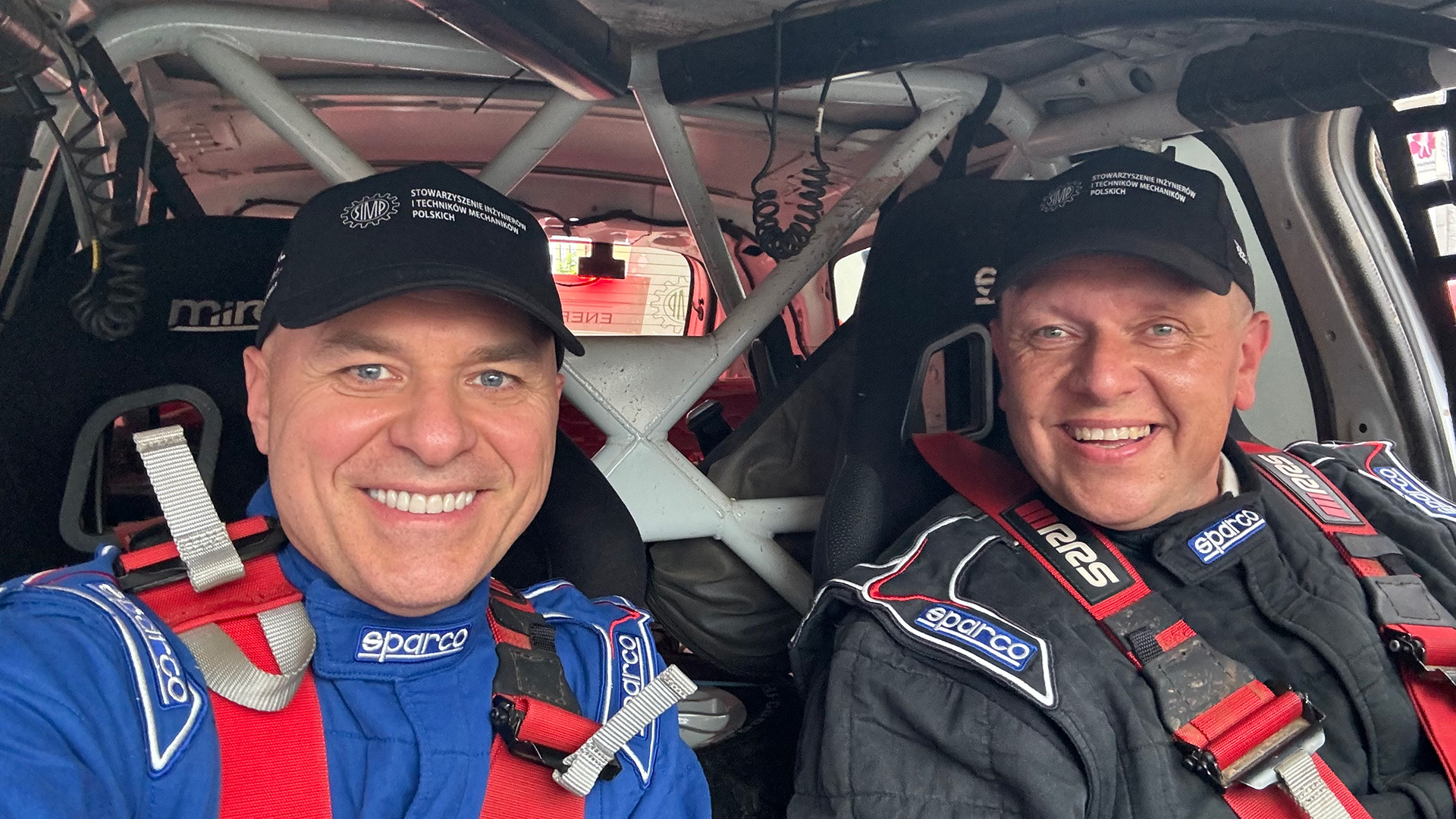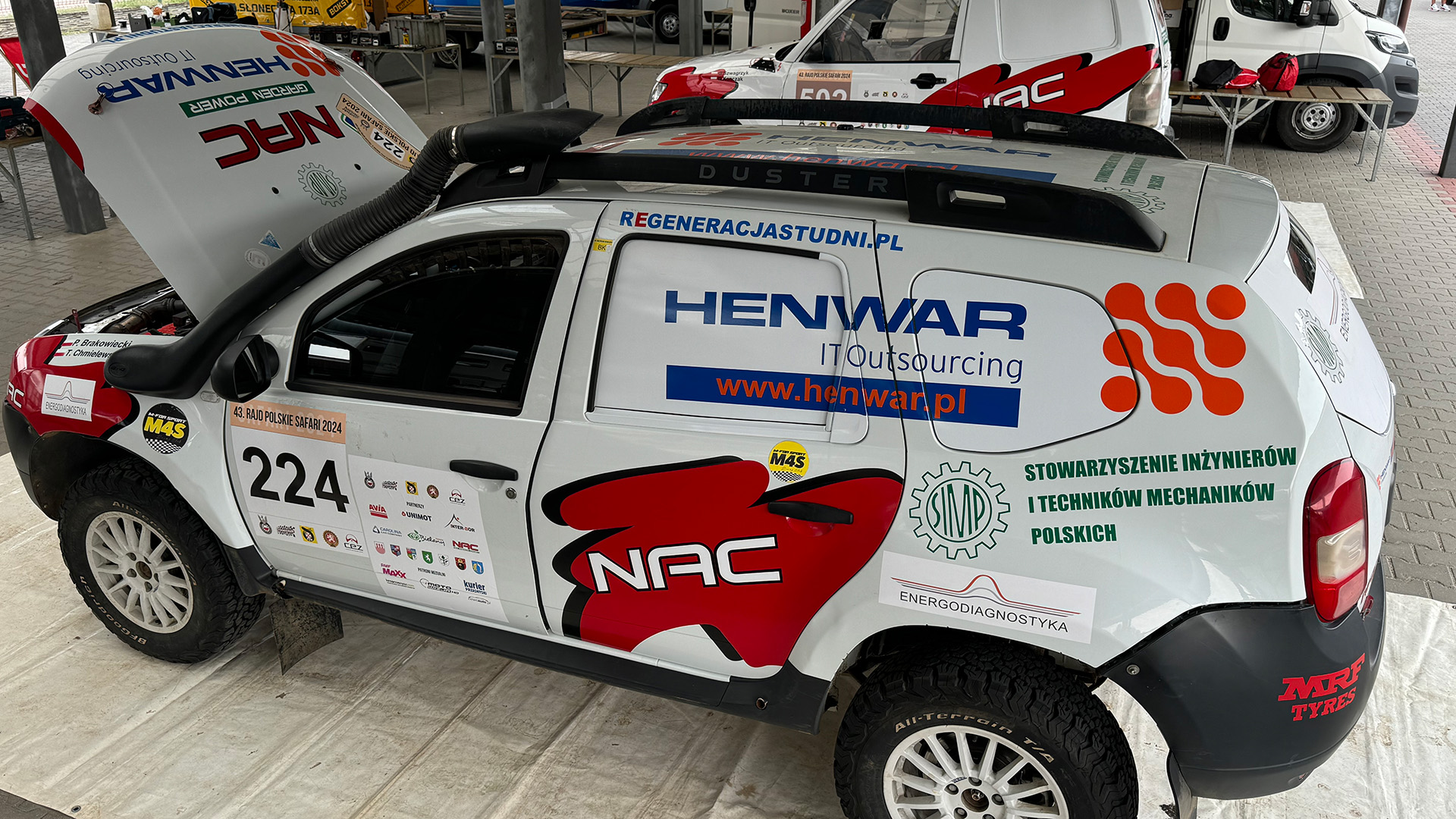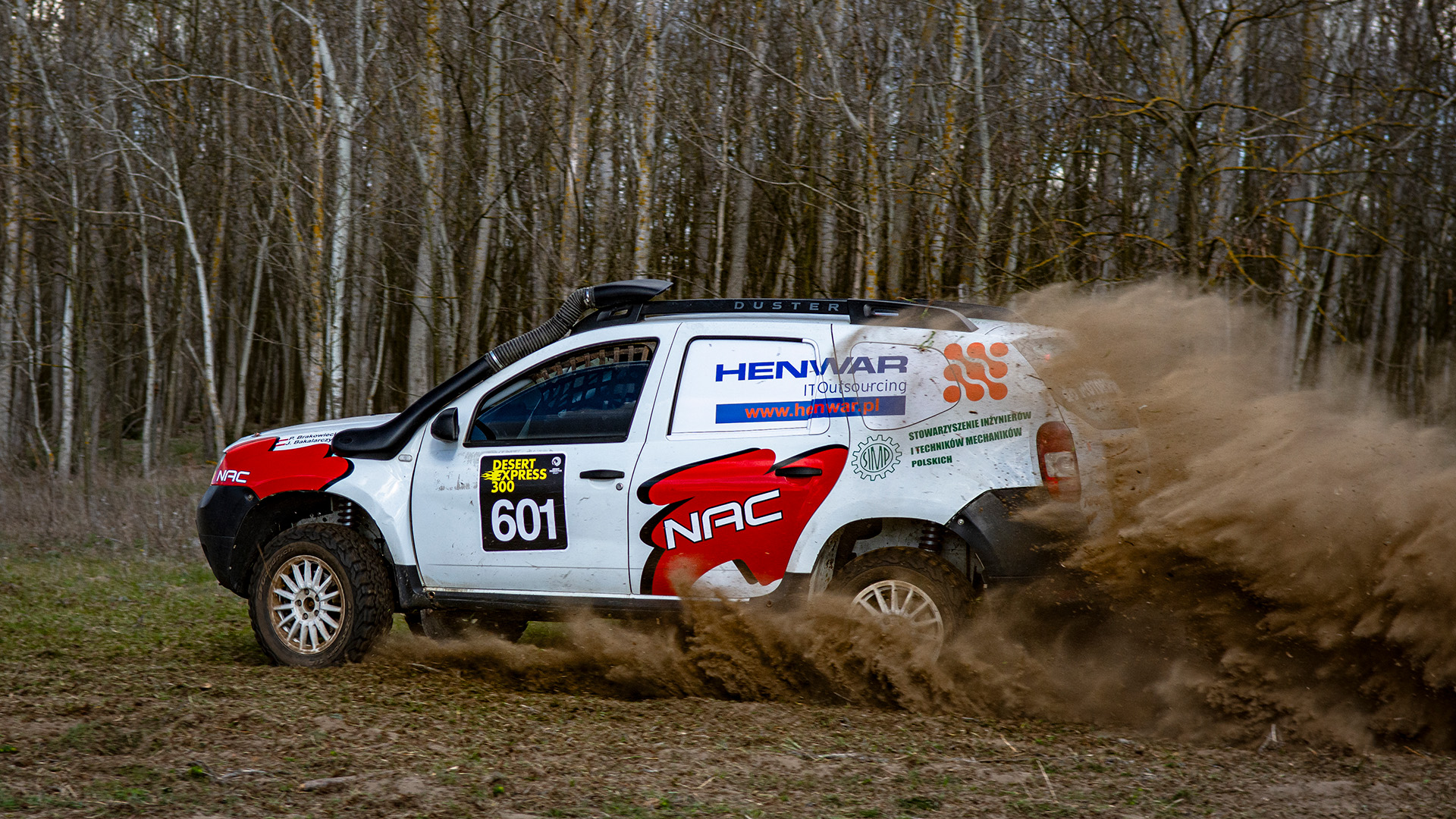An engineer's way to a medal in the Rally Championships
At the end of July, the 43rd Polish Safari Rally was held in Przasnysz. Third place in the TH group went to the Henwar SIMP Rally Team consisting of Piotr Brakowiecki (driver) and Tomasz Chmielewski (pilot) riding in the NAC Rally sponsoring team. Tomasz Chmielewski - besides being passionate about motorsport - is also... the Dean of the Faculty of Mechanical and Industrial Engineering at the Warsaw University of Technology.
Tomasz Chmielewski's passion began when he was a child, and his love of cars and motoring quickly became a life path. First, he graduated from the oldest automotive school in Poland, the Warsaw-based "Samochodówka" at 88 Hoża Street, where he obtained his professional qualifications. It was also there that his racing adventure began - at the school's go-kart club, where students built their own vehicles and competed in events. After his high school graduation, Tomasz Chmielewski graduated from the Faculty of Production Engineering at the Warsaw University of Technology (now the Faculty of Mechanical and Industrial Engineering), which - as Dean - he has headed since 2020.
Although he obtained his rally driver's licence many years ago, he has served as team leader in various rally teams, including the Henwar SIMP Rally Team. This year, however, he has taken the pilot's seat and, together with Piotr Brakowiecki, is successfully scoring further points in the Polish (RMPST) and Central European (FIA-CEZ) championship classifications. The duo's first joint event was the Baja Drawsko Pomorskie 2024 rally. Tomasz Chmielewski replaced Jakub Moliter, who changed teams, in the pilot's seat this season.
A few days ago, the team competed in the Polish Safari Rally - the name of an off-road rally, which this year was formally both the third round of the Polish Cross-Country Rally Championship qualifiers and the fourth round of the Central European Cross-Country Championship qualifiers. The competition took place from 26-28 July in Przasnysz.
Group TH, or how much Dacia is there in a rallying Dacia?
The Henwar SIMP Rally Team competed in the TH group, or prototype car category, with a Dacia Duster rebuilt by the Hołowczyc Racing team.
- It is possible to build yourself a car "from scratch", but in accordance with the regulations of the FIA International Automobile Federation / Polish Motor Association. The base for the conversion can be a car popularly known as a 'stock' car, i.e. a series car, but rebuilt. From the outside, our car looks like a Dacia Duster, but only the engine and gearbox are left over from the original model. As a curiosity, the Reiger suspension alone in this car is half the value of the 'rally car'. It is a deeply modified car - a brand new Dacia was practically stripped down to the bare bodywork - explains Tomasz Chmielewski.
The bodywork has been strengthened considerably, as the stresses of off-road driving are enormous. A certified safety cage is built in. The car has a special suspension that gives high travel and resistance to the dynamics associated with off-road driving. The transmission system is also built differently. - At the moment we have two cars, both running in the TH group - we use a Dacia, but we also have a Mitsubishi Pajero, which used to be the car tested by Stéphane Peterhansel and used in the Dakar Rally by Miroslav Zapletal. Now we have such a case in the near future that there is almost an overlap of dates between the two events and we would not manage to transport the car from Hungary to Drawsko Pomorskie, so the two cars will go to two different places, only we will move and we will do our best to participate in both events - adds the rally driver.
The rally duo trains between competitions. - The car is allowed to run because that is the requirement - it is registered. We test and train in terrain close to rally conditions. The routes of the special stages are off-road, i.e. off tarmac, somewhere in open spaces, either fields, forests or military training grounds. We try to look for a place to train and test the cars. Each of these rallies is different, the specifics of the special stages are different, some are short, others long, e.g. they are 80 km or 200 km long. Some lead through gravel tracks, others through narrow forest tracks, sometimes they are muddy areas. The car is tuned slightly differently for each rally - different tyres, differently tuned suspension. There are rallies where the sections are slow, fast, with uneven ground, and sometimes just sandy, and you have to adjust the car 'indirectly', in the sense of such a compromise, so that it can cope with any terrain - says Tomasz Chmielewski.
"To repeat is harder than to win"
In the team, both driver Piotr Brakowiecki and pilot Tomasz Chmielewski are graduates of the Faculty of Mechanical and Industrial Engineering of the Warsaw University of Technology and try to put their engineering knowledge to full use during rallies.
- This builds our advantage, as many of our competitors simply have much more powerful cars, and we win with efficiency and getting to the finish line. The rally routes are 200-300 km long, which we cover in 1 or 2 days at a high pace, and we try to operate reliably, which not all our competitors manage to do. Awareness of mechanical engineering, materials engineering, logistics, reliability theory of equipment and machinery - this helps us a lot, this is what builds our advantage. We know how things work, what materials they are made of, where the limits of material strain are" - stresses Chmielewski.
Before taking part in the competition, the car undergoes detailed tests, the so-called non-destructive tests using ultrasonic, magnetic and powder methods. Selected parts are also checked to make sure they are not cracked or have notches that could concentrate stress or cause a breakdown.
The Henwar SIMP crew has already won the title of Polish Champion and Central European Champion twice in the TH group, i.e. prototype cars.
- Vehicle dynamics is physics, some drivers have an instinct and can't explain why they drive like that, while we just understand what set of forces works under what conditions on the car - we approach it in an engineering way, not instinctively but scientifically. And you can see that it works, because once a team won the Polish and European Championships, they then repeated it and it's no longer a coincidence, it's just a matter of such statistically reliable information. It is more difficult to repeat than to win in the debut - explains the rallyist.
In a multi-member rally team, everyone contributes something of their own. The mechanics mean a great deal. A proven team of mechanics works with the Henwar SIMP Rally Team: Seweryn Mączyński and Marek Strzelecki, who have been invariably headed by Krzysztof Mączyński for several years. The preparation of the car, its reliability, is the foundation of success, without this even the best driver will not get the result to the finish line. Communication within the crew, which travels at high speeds over difficult terrain, is also key. The driver must have a precise route described by the pilot and clear messages about the route to be taken and the conditions. The pilot navigates the driver based on a route map of several dozen pages - the so-called roadbook - and cannot use maps or other indications. The race route is different every time and the crews do not know the route before the start.
The rally duo are in contact with the mechanics team, so that if there is a need to repair, replace or adjust something on the car between special stages, by the time they reach the service area the mechanics team already know what they need to do and have about 40 minutes to do it. - This is a team game. Every element of that team contributes and has to make it as good as possible to make it work. Especially as we don't have a hell of a fast car like our competitors - we have to win against them with a way. If not with equipment, then with talent and knowledge - concludes Tomasz Chmielewski.
Halfway point in the rallying competition
The entire Polish Championship season consists of six rounds, while the Central European Championship additionally includes three rounds held in Hungary. So we are at the halfway point of the domestic rallying. - Before us is the Baja Poland in Szczecin and Drawsko Pomorskie, held on a military training ground, which is a very prestigious event. In addition to being a qualifying round for both the Polish and Central European Championships - the fourth and fifth rounds respectively - it is also a World Cup qualifying round - a very high-ranking event,' Chmielewski points out.
The rally competition traditionally ends in November - the Polish Championship ends with the Independence Rally and the European Championship ends with the away "Raid of the Champions" in Hungary. As the rally driver points out, the final podium places are decided from the first to the last round, it is not insignificant to reach the finish line regularly, and some cars simply do not last the whole season - often it is fortuitous cases such as damage to the car or its parts on an obstacle. The decoration of the winners takes place at the Olympic Centre in Warsaw (in the case of the Polish Championships) and in one of the cities representing the 15 member states (Central European Championships). We believe that during both winners' decoration, we will see our team there!













